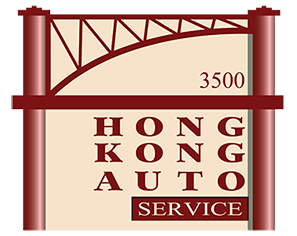Helping your tires last longer helps save you hundreds of dollars
 There are many parts to a car that you can just forget about (unless they break). But your tires can’t be put in this category. There are a host of steps you can take to make them last longer and prevent you from being stranded on the side of the road with a flat or blown tire. The proper care also helps keep your hard-earned cash in your pocket longer instead of it being spent on a set of new tires!
There are many parts to a car that you can just forget about (unless they break). But your tires can’t be put in this category. There are a host of steps you can take to make them last longer and prevent you from being stranded on the side of the road with a flat or blown tire. The proper care also helps keep your hard-earned cash in your pocket longer instead of it being spent on a set of new tires!
Here’s the most important tire maintenance steps for you to know:
1. Check the tire pressure at least once a month. According to studies conducted by the National Highway Traffic Safety Administration on tire-related crashes, the leading cause of tire failure is underinflation, which causes premature and uneven tread wear on the outer edges. Underinflation also increases stress on the tire itself, which can lead to structural failures such as tread separation. Proper tire pressure is so important that the government required all light motor vehicles (including passenger cars) made after Sept. 1, 2007, to be equipped with a tire pressure monitoring system. This alerts you when your tire pressure falls below a certain threshold. If this light comes on, check your tire pressure and add air if necessary. The recommended pressure for your car’s tires is usually found in the owner’s manual and on a sticker inside the driver’s door.
Another great reason to check your tire pressure each month? The Department of Transportation estimates that 5 million gallons of fuel per day are wasted due to low tire pressure.
2. Rotate those tires. Tires may wear differently depending on their position on the vehicle, your driving style and the condition of your suspension. Regularly rotating your tires helps evenly distribute tire wear—helping you get the most miles out of your tires while maximizing traction on all four wheels. Rotations should be performed every 6,000 miles.
3. Keep those wheels balanced. Wheels become unbalanced when a wheel weight falls off the wheel or the tire spins slightly on the wheel as a result of rapid braking or accelerating. Another frequent cause of tire vibration is an internal failure, which is usually referred to as a belt separation. Day-to-day treadwear also causes changes in the distribution of weight in the wheels. While correcting a missing wheel weight is a simple matter of rebalancing the wheels, any tire/wheel vibration should be inspected by a professional as soon as possible because an out of balance tire will cause rapid tire, steering and suspension wear. We’ll balance your wheels and tires when you bring your vehicle in for a tire rotation.
4. Ensure the wheels are properly aligned. A car that is out of alignment has a tendency to pull and drift from the center line, and in severe cases, you may find yourself fighting to keep the steering wheel centered. This can cause rapid and severe uneven tire wear, and you may feel like your car is “wandering” down the highway. We recommend having the vehicle aligned once a year, or as needed, if you experience the symptoms mentioned here.
5. Modify your driving habits. What you subject your tires to has a huge impact on their lifespan. Whenever possible, try to avoid potholes, quick starts, fast turns, abrupt stops, speeding, curbs, debris and heavy loads.
